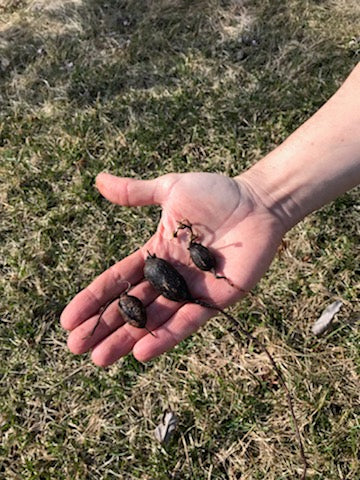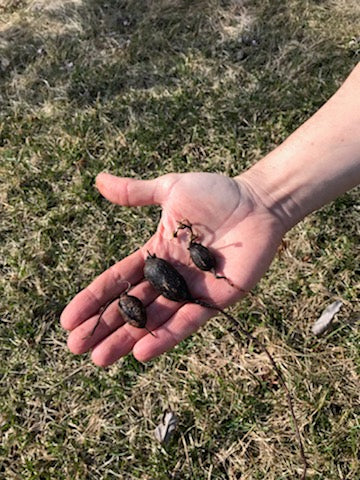Earthnut Pea - Lathyrus tuberosus
Earthnut Pea - Lathyrus tuberosus
Couldn't load pickup availability
Lathyrus tuberosus is a member of the pea family, with its many important food plants. But unlike most of its cousins, it stores energy in a tuber that is both easy to grow and delicious to eat. Its appearance, size, growing habit, and texture is similar to apios americana. It does not grow quite as large and its tubers' production is not quite as plentiful, but it also has other advantages. It produces seeds, for example, which northern apios does not, and it does not spread quite as aggressively. It will spread by long rhizomes, and into other beds if not checked, but a bit more politely. A note of caution: the seeds of many lathyrus species have been known to cause neurological problems when eaten raw. To our knowledge, this is not the case of the tuber, but avoid eating raw, and, as with any new food, inform yourself and sample first. ⚠️
Cultivation: Very easy to grow and harvest. Plant in moist, sunny to part-shade condition, in sandy or heavier soil. Mulch helps to keep it happy. Keep away from potentially delicate neighbours, it is both a climber and rhizome-spreader. But fairly easy to control by harvesting the tubers. The plant does take at least two years to produce sizeable tubers, which is probably its main flaw. But that also means it produces a constant supply, under ideal conditions. Simply replant the small ones, and they’ll be ready in a year. The pink flowers are very pretty and smell great.
Food preparation: Peel and boil. Firm texture means it’s great in stews. One study indicates a 20% protein content, much higher than most other tubers. (Hossaert-Palauqui and Delbos,1983).
Ethnobotany: Known by many different names, including Tuberous Pea, Earth Chestnut, or even Souris de Terre (Earth Mouse) in French, it has been harvested and cultivated for centuries in Europe. It’s an important part of our food history, and well worth cultivating for that reason alone. Attempts have been made to improve it, but we have yet to find material evidence of it.
References:
Hossaert-Palauqui M., Delbos M. 1983. « Lathyrus tuberosus L. Biologie et perspectives d'amélioration. » Journal d'agriculture traditionnelle et de botanique appliquée, 30ᵉ année, bulletin n°1, Janvier-mars 1983. pp. 49-58.
Share


